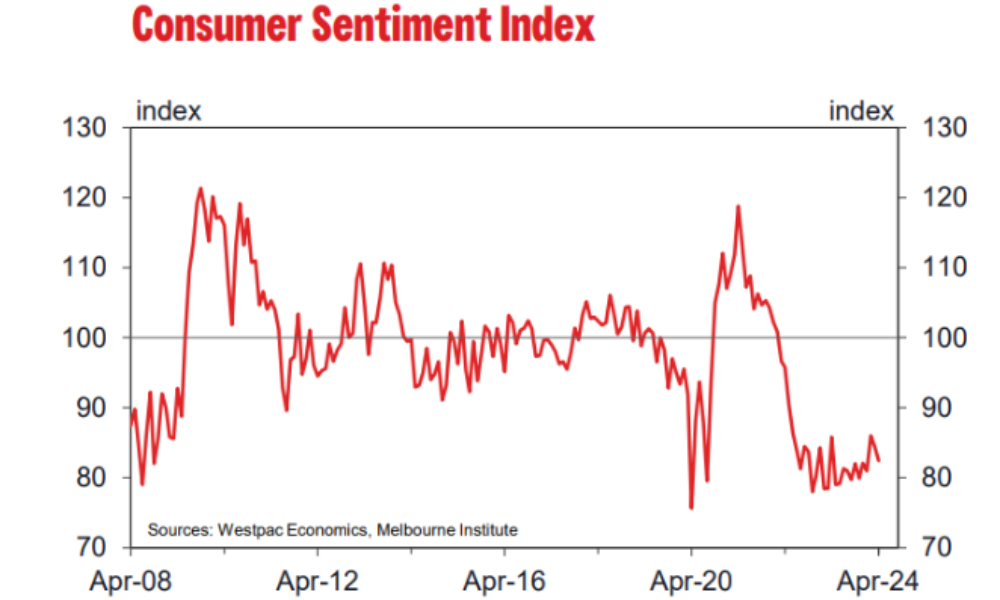

Australia’s tough inflation battle is underscored by recent consumer sentiment data, illustrating looming challenges and persistent gloom without immediate signs of relief.
The Westpac Melbourne Institute consumer sentiment index fell by 2.4% to 82.4 in April from 84.4 in March. This downturn aligns with the bleak sentiment of the past two years, marking one of the most pessimistic periods since the mid-1970s.
“The gloom hanging over the Australian consumer shows little sign of lifting,” said Matthew Hassan (pictured above), senior economist at Westpac.
April’s data, particularly disheartening after signs of potential recovery, underscored the relentless inflationary pressures on households.
“Consumer price rises have outstripped wage growth by six percentage points over the last three years,” Hassan said in a media release.

Despite the overarching negative sentiment, there are minor positives.
Expectations for family finances over the next year have improved slightly, possibly due to the anticipation of Stage 3 tax cuts coming in July. Additionally, sentiments around the labour market are positive, with individuals feeling confident about job security.
However, the cost-of-living pressures, higher interest rates, and an increased tax burden continued to impact. A notable drop in the sub-index regarding the timing for household purchases, down by nearly 7%, indicated consumer reluctance amidst economic uncertainty.
“Many people are yet to be convinced that interest rates have peaked, with over 40% of respondents still expecting mortgage rates to move higher over the next 12 months,” Hassan said.
Australia’s inflation struggle appears more prolonged and challenging compared to other countries. Sentiment scores in the US, the UK, and Europe are notably higher.
“The inflation story is somewhat more advanced in those countries,” Hassan said, suggesting potential for a shift in Australia’s economic messaging in the months to come.
With the March quarter inflation report anticipated to show a decisive decrease in headline inflation, there’s hope for the Reserve Bank to meet its inflation targets by 2025.
“This could signal an end to rate hikes, possibly even paving the way for rate cuts, though we expect caution," Hassan said.
The upcoming federal budget and the July tax cuts offer a glimmer of hope for easing consumer pessimism. Yet, as Hassan concluded, “Right here, right now, we’re stuck at the bottom of the cycle, and confidence remains downbeat.”
For a comprehensive analysis and further insights, Hassan’s full report is available on WestpacIQ.
We’d love to hear your take: How are you navigating Australia's inflation and its effects on consumer sentiment and the housing market? Share your insights.
